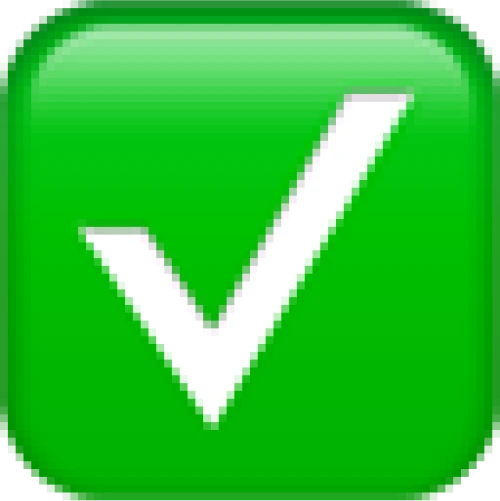July 9, 2025
6 min read
Job hunting can be exhausting, especially when rejection after rejection makes you question your abilities. That’s exactly where I was. After countless resume submissions and no callbacks, I knew I had to change something.
When I first came across the job posting, I saw the role perfectly aligned with everything I had been building toward. The company had the kind of creative culture I craved, the kind of clients I admired, and the kind of work that challenged norms instead of recycling them. I was hooked.
But that excitement quickly turned into anxiety. The competition was going to be fierce. And a good portfolio and resume weren’t going to cut through the noise.
So I made a decision early on: if I wanted this job, I couldn’t just apply for it—I had to design for it.
This was my first job application after finishing college. The job pool was huge—hundreds of applicants—and when I made it to the final round with just twelve other candidates, I knew it was my one shot to stand out.
So I asked myself: How do I outplay other candidates who may have the same hard skills as me?
I remembered something from college. Back when I competed in a research poster presentation, I realized the power of turning ideas into compelling visuals and stories. That was when it first hit me: what if I pitch myself like a product? Instead of just answering questions, I could present like I did in front of judges.
That idea got me.
So this time, I treated the interview like a pitch deck.
I’m the product. I'm the pitcher.
I have to sell myself.
“The stage is yours.”
So I made custom presentation slides that walked the interviewers through my background, my creative process, and the value I could bring to their team. I packaged myself as a design solution to their problems—someone who could help them—not just another applicant with skills on paper.
That creative approach made all the difference.
Not only did it leave a lasting impression, it showed them how I think, how I tell stories, and how I solve problems—all through design.
Like Cole Pfeiffer in Prison Break, who walked into a boardroom unprepared for a surprise presentation—but somehow delivered it with such confidence and charm that he fooled everyone. He still aced it with a bold and confident pitch. I decided to do the same. I wasn’t just going to answer interview questions; I was going to own the room. Even if I didn’t know what the other candidates were bringing to the table, I was going to make sure mine was unforgettable.
The Strategy: Be the product. Be the pitcher.
I knew I had the hard skills. But so did everyone else in the final round.
What would set me apart?
Effort. Presentation. Storytelling.
Instead of just showing up with answers, a good portfolio, and a polished resume, I made a beautifully designed slide deck that introduced me. Not just my work history or portfolio, but who I am, how I think, and what kind of value I bring to the table.
I designed the presentation like I would for a product pitch, but this time, the product was myself.
Here’s what I included:
-

A brief personal intro with personality (not just credentials)
-

My values, principles, and approach to creative problem-solving
-

Case studies of past projects—but framed like mini stories
-

My favorite design failure—and what it taught me
-

A closing slide that answered why I’m the best fit for the role
It wasn’t just about making pretty slides and wasn’t just telling them I was the right fit. It was about showing them how I think, work, and communicate in a way that was impossible to ignore.
Why This Worked
Most candidates rely only on their resumes and verbal answers. Most interviewers are bored after hearing the same answers all day. But I knew this company was hiring a creative—so why not show them how I turn ordinary moments into creative expression?
This approach demonstrated more than my design skills. It showed soft skills like:
-

Initiative and preparation
-

Empathy (understanding how the interviewer would perceive my pitch)
-

Communication and storytelling
-

Passion for the craft
-

You care enough to go the extra mile
And above all, it showed that I care enough to go beyond the basic requirements.
The Result?
The interviewers were impressed, not just my skills, not just by my slides, but by the thought and storytelling behind them. I didn’t just tell them who I was—I showed them.
A few days later, I got the job offer. I was happy.
Final Thoughts: Stand Out by Showing Up Differently. Be An Outlier.
If you’re in a sea of candidates with similar hard skills, find a way to stand out through your soft skills and presentation. You don’t need flashy animations or over-the-top effects—just intentional, thoughtful design that reflects you.
Of course, this technique wouldn’t be enough. It’s not like it would magically work. You still need hard skills tho, and sometimes experience—to truly fit the role. It also depends on the role or job. And yes, a bit of luck plays a part too. But by taking that approach, you're also showing your soft skills, the ability to put serious effort into something simple, which can make a huge difference as part of a team.
Sometimes, your creativity isn’t just for clients or campaigns; it’s your most powerful tool to sell yourself.
Whatever you do today, do it with the confidence like a boy in a Batman shirt.
Always do your best, no matter the size of your audience.
Namaste. Best of luck!
